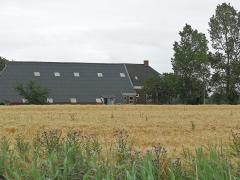Anthropogenic and natural constituents in particulate matter in the Netherlands
To develop mitigation strategies for reducing concentrations of both PM2.5 and PM10, the origin of particulate matter (PM) needs to be established. An intensive, one-year measurement campaign from August 2007 to August 2008 was carried out to determine the composition of PM10 and PM2.5 at five locations in the Netherlands, aiming at reducing the uncertainties on the origin of PM.
Generally, a considerable conformity in the chemical composition of PM2.5 (and PM10) is observed. From all constituents present in PM2.5, the secondary inorganic aerosol is the most dominant (42–48%), followed by the total carbonaceous matter (22–37%). Contributions from sea salt (maximum 8%), mineral dust and metals (maximum 5%) are relatively low. For the first time, a detailed overview of the composition of the coarse fraction can be presented. Compared to the fine fraction, contributions of sea salt, mineral dust and metals are larger resulting in a more balanced distribution between the various constituents. Through mass closure a considerable part of the PM mass could be defined (PM2.5: 80–94%). The chemical distribution on days with high PM levels shows a distinct increase in nitrate as well as in the unaccounted mass. Contributions of the other constituents remain equal or are lower (sea salt) when expressed in percentages. A correspondence between nitrate and the unaccounted mass is observed hinting at the presence of water on the filters. The contribution from natural sources in the Netherlands (at a rural station) was estimated to be 19 to 24% for PM10 and 13 to 17% for PM2.5.
Authors
Specifications
- Publication title
- Anthropogenic and natural constituents in particulate matter in the Netherlands
- Publication date
- 14 March 2011
- Publication type
- Publication
- Magazine
- Atmospheric Chemistry and Physics
- Product number
- 92564




